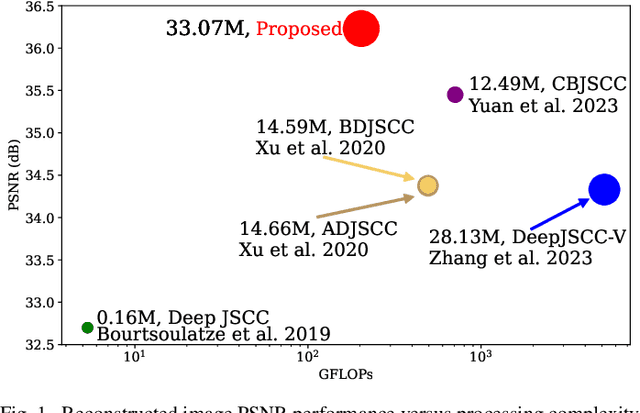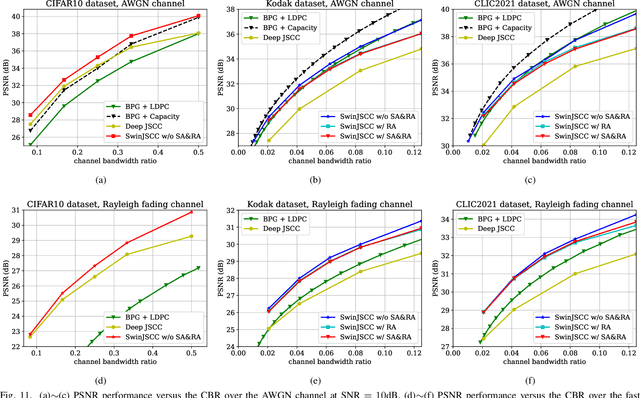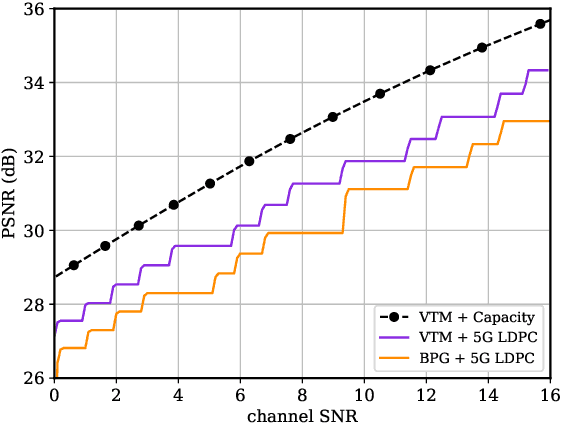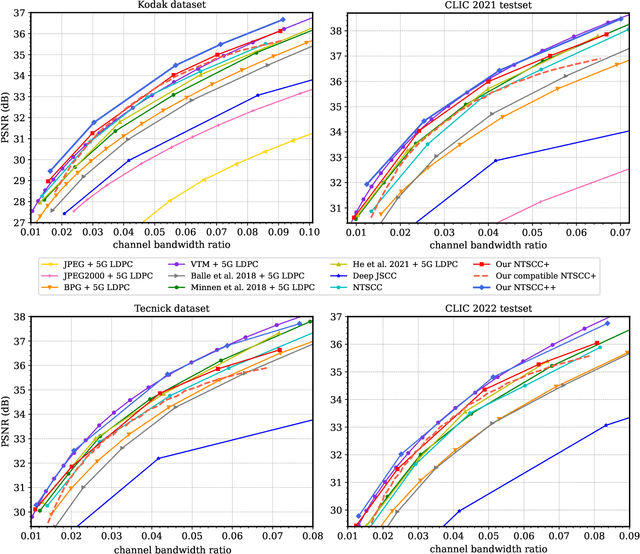Kai Niu
Towards Automatic Continual Learning: A Self-Adaptive Framework for Continual Instruction Tuning
Mar 20, 2025Abstract:Continual instruction tuning enables large language models (LLMs) to learn incrementally while retaining past knowledge, whereas existing methods primarily focus on how to retain old knowledge rather than on selecting which new knowledge to learn. In domain-specific contexts, maintaining data quality and managing system constraints remain key challenges. To address these issues, we propose an automated continual instruction tuning framework that dynamically filters incoming data, which identify and reduce redundant data across successive updates. Our approach utilizes a small proxy model for efficient perplexity-based filtering, and updates the proxy to ensure that the filtering criteria remain aligned with the evolving state of the deployed model. Compared to existing static data selection methods, our framework can effectively handle incrementally acquired data and shifting distributions. Additionally, it addresses practical deployment challenges by enabling seamless model updates, supporting version rollback and incorporating automatic checkpoint evaluation. We evaluated the system in real-world medical scenarios. It reduced computational costs by 66.7% and improved model performance, and achieved autonomous updates, thus demonstrating its effectiveness for automatic continual instruction tuning.
NeRFCom: Feature Transform Coding Meets Neural Radiance Field for Free-View 3D Scene Semantic Transmission
Feb 27, 2025Abstract:We introduce NeRFCom, a novel communication system designed for end-to-end 3D scene transmission. Compared to traditional systems relying on handcrafted NeRF semantic feature decomposition for compression and well-adaptive channel coding for transmission error correction, our NeRFCom employs a nonlinear transform and learned probabilistic models, enabling flexible variable-rate joint source-channel coding and efficient bandwidth allocation aligned with the NeRF semantic feature's different contribution to the 3D scene synthesis fidelity. Experimental results demonstrate that NeRFCom achieves free-view 3D scene efficient transmission while maintaining robustness under adverse channel conditions.
Multi-Block UAMP Detection for AFDM under Fractional Delay-Doppler Channel
Oct 15, 2024Abstract:Affine Frequency Division Multiplexing (AFDM) is considered as a promising solution for next-generation wireless systems due to its satisfactory performance in high-mobility scenarios. By adjusting AFDM parameters to match the multi-path delay and Doppler shift, AFDM can achieve two-dimensional time-frequency diversity gain. However, under fractional delay-Doppler channels, AFDM encounters energy dispersion in the affine domain, which poses significant challenges for signal detection. This paper first investigates the AFDM system model under fractional delay-Doppler channels. To address the energy dispersion in the affine domain, a unitary transformation based approximate message passing (UAMP) algorithm is proposed. The algorithm performs unitary transformations and message passing in the time domain to avoid the energy dispersion issue. Additionally, we implemented block-wise processing to reduce computational complexity. Finally, the empirical extrinsic information transfer (E-EXIT) chart is used to evaluate iterative detection performance. Simulation results show that UAMP significantly outperforms GAMP under fractional delay-Doppler conditions.
Rate-Distortion-Perception Controllable Joint Source-Channel Coding for High-Fidelity Generative Communications
Aug 26, 2024Abstract:End-to-end image transmission has recently become a crucial trend in intelligent wireless communications, driven by the increasing demand for high bandwidth efficiency. However, existing methods primarily optimize the trade-off between bandwidth cost and objective distortion, often failing to deliver visually pleasing results aligned with human perception. In this paper, we propose a novel rate-distortion-perception (RDP) jointly optimized joint source-channel coding (JSCC) framework to enhance perception quality in human communications. Our RDP-JSCC framework integrates a flexible plug-in conditional Generative Adversarial Networks (GANs) to provide detailed and realistic image reconstructions at the receiver, overcoming the limitations of traditional rate-distortion optimized solutions that typically produce blurry or poorly textured images. Based on this framework, we introduce a distortion-perception controllable transmission (DPCT) model, which addresses the variation in the perception-distortion trade-off. DPCT uses a lightweight spatial realism embedding module (SREM) to condition the generator on a realism map, enabling the customization of appearance realism for each image region at the receiver from a single transmission. Furthermore, for scenarios with scarce bandwidth, we propose an interest-oriented content-controllable transmission (CCT) model. CCT prioritizes the transmission of regions that attract user attention and generates other regions from an instance label map, ensuring both content consistency and appearance realism for all regions while proportionally reducing channel bandwidth costs. Comprehensive experiments demonstrate the superiority of our RDP-optimized image transmission framework over state-of-the-art engineered image transmission systems and advanced perceptual methods.
DiffCom: Channel Received Signal is a Natural Condition to Guide Diffusion Posterior Sampling
Jun 11, 2024



Abstract:End-to-end visual communication systems typically optimize a trade-off between channel bandwidth costs and signal-level distortion metrics. However, under challenging physical conditions, this traditional discriminative communication paradigm often results in unrealistic reconstructions with perceptible blurring and aliasing artifacts, despite the inclusion of perceptual or adversarial losses for optimizing. This issue primarily stems from the receiver's limited knowledge about the underlying data manifold and the use of deterministic decoding mechanisms. To address these limitations, this paper introduces DiffCom, a novel end-to-end generative communication paradigm that utilizes off-the-shelf generative priors and probabilistic diffusion models for decoding, thereby improving perceptual quality without heavily relying on bandwidth costs and received signal quality. Unlike traditional systems that rely on deterministic decoders optimized solely for distortion metrics, our DiffCom leverages raw channel-received signal as a fine-grained condition to guide stochastic posterior sampling. Our approach ensures that reconstructions remain on the manifold of real data with a novel confirming constraint, enhancing the robustness and reliability of the generated outcomes. Furthermore, DiffCom incorporates a blind posterior sampling technique to address scenarios with unknown forward transmission characteristics. Extensive experimental validations demonstrate that DiffCom not only produces realistic reconstructions with details faithful to the original data but also achieves superior robustness against diverse wireless transmission degradations. Collectively, these advancements establish DiffCom as a new benchmark in designing generative communication systems that offer enhanced robustness and generalization superiorities.
Deep Generative Modeling Reshapes Compression and Transmission: From Efficiency to Resiliency
Jun 10, 2024



Abstract:Information theory and machine learning are inextricably linked and have even been referred to as "two sides of the same coin". One particularly elegant connection is the essential equivalence between probabilistic generative modeling and data compression or transmission. In this article, we reveal the dual-functionality of deep generative models that reshapes both data compression for efficiency and transmission error concealment for resiliency. We present how the contextual predictive capabilities of powerful generative models can be well positioned to be strong compressors and estimators. In this sense, we advocate for viewing the deep generative modeling problem through the lens of end-to-end communications, and evaluate the compression and error restoration capabilities of foundation generative models. We show that the kernel of many large generative models is powerful predictor that can capture complex relationships among semantic latent variables, and the communication viewpoints provide novel insights into semantic feature tokenization, contextual learning, and usage of deep generative models. In summary, our article highlights the essential connections of generative AI to source and channel coding techniques, and motivates researchers to make further explorations in this emerging topic.
Docs2KG: Unified Knowledge Graph Construction from Heterogeneous Documents Assisted by Large Language Models
Jun 05, 2024



Abstract:Even for a conservative estimate, 80% of enterprise data reside in unstructured files, stored in data lakes that accommodate heterogeneous formats. Classical search engines can no longer meet information seeking needs, especially when the task is to browse and explore for insight formulation. In other words, there are no obvious search keywords to use. Knowledge graphs, due to their natural visual appeals that reduce the human cognitive load, become the winning candidate for heterogeneous data integration and knowledge representation. In this paper, we introduce Docs2KG, a novel framework designed to extract multimodal information from diverse and heterogeneous unstructured documents, including emails, web pages, PDF files, and Excel files. Dynamically generates a unified knowledge graph that represents the extracted key information, Docs2KG enables efficient querying and exploration of document data lakes. Unlike existing approaches that focus on domain-specific data sources or pre-designed schemas, Docs2KG offers a flexible and extensible solution that can adapt to various document structures and content types. The proposed framework unifies data processing supporting a multitude of downstream tasks with improved domain interpretability. Docs2KG is publicly accessible at https://docs2kg.ai4wa.com, and a demonstration video is available at https://docs2kg.ai4wa.com/Video.
Semantics-Division Duplexing: A Novel Full-Duplex Paradigm
Dec 14, 2023Abstract:In-band full-duplex (IBFD) is a theoretically effective solution to increase the overall throughput for the future wireless communications system by enabling transmission and reception over the same time-frequency resources. However, reliable source reconstruction remains a great challenge in the practical IBFD systems due to the non-ideal elimination of the self-interference and the inherent limitations of the separate source and channel coding methods. On the other hand, artificial intelligence-enabled semantic communication can provide a viable direction for the optimization of the IBFD system. This article introduces a novel IBFD paradigm with the guidance of semantic communication called semantics-division duplexing (SDD). It utilizes semantic domain processing to further suppress self-interference, distinguish the expected semantic information, and recover the desired sources. Further integration of the digital and semantic domain processing can be implemented so as to achieve intelligent and concise communications. We present the advantages of the SDD paradigm with theoretical explanations and provide some visualized results to verify its effectiveness.
SwinJSCC: Taming Swin Transformer for Deep Joint Source-Channel Coding
Aug 18, 2023



Abstract:As one of the key techniques to realize semantic communications, end-to-end optimized neural joint source-channel coding (JSCC) has made great progress over the past few years. A general trend in many recent works pushing the model adaptability or the application diversity of neural JSCC is based on the convolutional neural network (CNN) backbone, whose model capacity is yet limited, inherently leading to inferior system coding gain against traditional coded transmission systems. In this paper, we establish a new neural JSCC backbone that can also adapt flexibly to diverse channel conditions and transmission rates within a single model, our open-source project aims to promote the research in this field. Specifically, we show that with elaborate design, neural JSCC codec built on the emerging Swin Transformer backbone achieves superior performance than conventional neural JSCC codecs built upon CNN, while also requiring lower end-to-end processing latency. Paired with two spatial modulation modules that scale latent representations based on the channel state information and target transmission rate, our baseline SwinJSCC can further upgrade to a versatile version, which increases its capability to adapt to diverse channel conditions and rate configurations. Extensive experimental results show that our SwinJSCC achieves better or comparable performance versus the state-of-the-art engineered BPG + 5G LDPC coded transmission system with much faster end-to-end coding speed, especially for high-resolution images, in which case traditional CNN-based JSCC yet falls behind due to its limited model capacity. \emph{Our open-source code and model are available at \href{https://github.com/semcomm/SwinJSCC}{https://github.com/semcomm/SwinJSCC}.}
Improved Nonlinear Transform Source-Channel Coding to Catalyze Semantic Communications
Mar 26, 2023



Abstract:Recent deep learning methods have led to increased interest in solving high-efficiency end-to-end transmission problems. These methods, we call nonlinear transform source-channel coding (NTSCC), extract the semantic latent features of source signal, and learn entropy model to guide the joint source-channel coding with variable rate to transmit latent features over wireless channels. In this paper, we propose a comprehensive framework for improving NTSCC, thereby higher system coding gain, better model versatility, and more flexible adaptation strategy aligned with semantic guidance are all achieved. This new sophisticated NTSCC model is now ready to support large-size data interaction in emerging XR, which catalyzes the application of semantic communications. Specifically, we propose three useful improvement approaches. First, we introduce a contextual entropy model to better capture the spatial correlations among the semantic latent features, thereby more accurate rate allocation and contextual joint source-channel coding are developed accordingly to enable higher coding gain. On that basis, we further propose response network architectures to formulate versatile NTSCC, i.e., once-trained model supports various rates and channel states that benefits the practical deployment. Following this, we propose an online latent feature editing method to enable more flexible coding rate control aligned with some specific semantic guidance. By comprehensively applying the above three improvement methods for NTSCC, a deployment-friendly semantic coded transmission system stands out finally. Our improved NTSCC system has been experimentally verified to achieve 16.35% channel bandwidth saving versus the state-of-the-art engineered VTM + 5G LDPC coded transmission system with lower processing latency.
 Add to Chrome
Add to Chrome Add to Firefox
Add to Firefox Add to Edge
Add to Edge